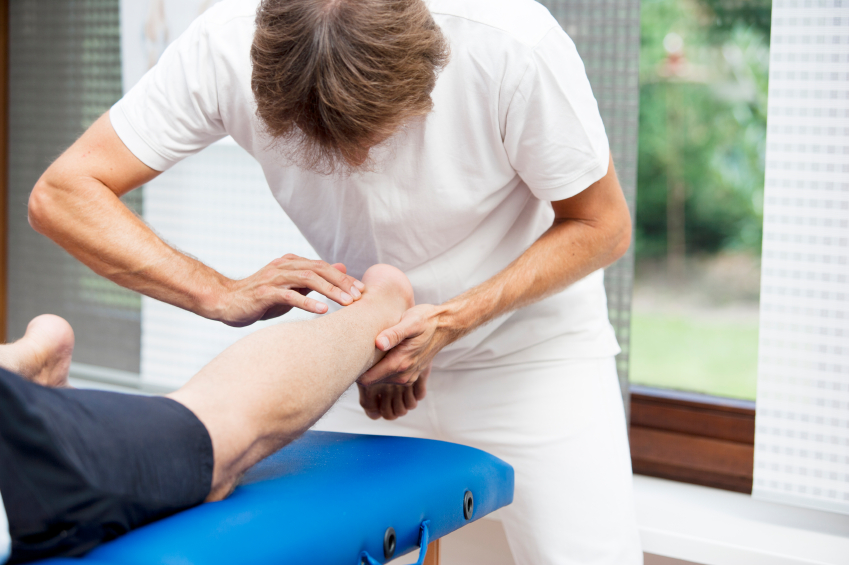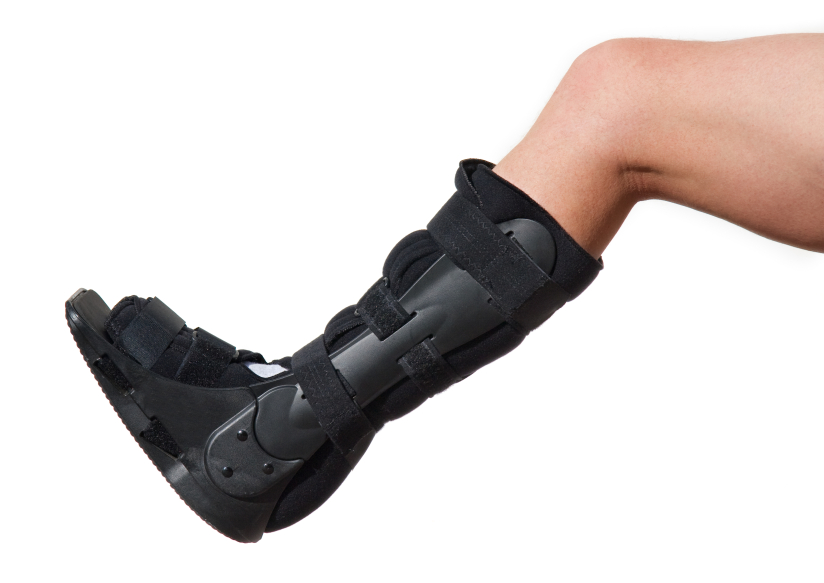Achilles Tendinosis Surgery: What To Expect?
Recovering from Achilles Tendinosis Surgery
ACE Physical Therapy and Sports Medicine Institute
Achilles Tendinosis Surgery Recovety.
- Seek medical advice if you hurt your Achilles tendon.
- Use the RICE principles of acute treatment if you injure your Achilles.
- Eccentric exercises might enable you to avoid surgery of a tendon that has Tendinosis in it.
- Do not aggressively stretch your surgically repaired Achilles tendon for 6-8 weeks.
- Listen to your Physical Therapist and your rehabilitation efforts will be rewarded with your full return to the activities that you enjoy.
If you continue to suffer from Achilles tendon pain for a long period of time after attempting conservative treatments, you may have to consider other options. Your doctor may order an MRI scan that reveals the tendon is damaged and that it will not heal on its own. The cell structure of the tendon may actually be changed. Known as Tendinosis of the Achilles tendon, this condition may need surgical correction in order to restore the normal function of the tendon.
If the damaged tendon fibers are greater than 50% of the total tendon cross sectional measurement, you are at a higher risk of rupturing the tendon. You can decide about whether to have surgery and when to have surgery in conjunction with your surgeon. The length and difficulty of your rehabilitation will correlate to the severity of the damaged tendon.
Because the procedure is not a “life or death” surgery, you can wait to have the surgery performed when it fits nicely into your work and personal schedule. The following will hopefully make your decision process a little bit easier.
What is Achilles Tendinosis Surgery?
Achilles Tendinosis Surgery removes the chronically damaged tendon fibers that have not healed and have been diagnosed as Tendinosis. In the best case scenario, the damaged fibers do not constitute the entire tendon and only a portion of the fibers are removed. If the entire tendon is damaged, the surgeon will have to “cut” the tendon horizontally to remove the damaged area and then surgically reattach it. If this occurs, the surgery and rehabilitation are similar to that of a ruptured Achilles tendon.
For now, let’s consider what surgery and rehabilitation looks like when the total repair of the tendon is not required. The surgical procedure consists of a longitudinal incision (not horizontal). The type of incision is critical in the rehabilitation process, impacting your ability to weight bear and strength train. Because the longitudinal incision is along the natural orientation and “pull” of the fibers, it allows for more aggressive rehabilitation.
Think of a piece of garden hose with strands of leather like longitudinal bands inside it: some of those strands are damaged and will not heal. The surgeon cuts the outer shell of the “hose” longitudinally and can locate the damaged bands. The bands are surgically cut out and removed similar to a “cookie cut-out.” The surgeon then sutures the outer shell together along the longitudinal incision.
What should you expect after surgery?
Pain: You will experience some form of pain, but everyone has different pain tolerances. The surgeon will prescribe pain medication and you should apply ice to the area as often as possible during the first 48-72 hours post-op. While the pain from the Tendinosis tissue will decrease once it is removed, you will experience some pain related to the surgical incision. Acute inflammation/swelling from the surgical procedure will cause pain in the ankle/foot area. You can help reduce swelling and pain by using the RICE (Rest, Ice, Compression, Elevation) method.
When the doctor gives you the ok to walk on your leg, you will experience pain. Don’t panic if the pain is similar to the pain that you experienced prior to surgery. The tendon will heal, though it will take several weeks/months to feel good and pain free.
Weight bearing: Initially, you’ll need to stay off the foot/ankle and avoid any weight bearing. This normally lasts several days to weeks. Your surgeon can help you determine when and how much weight you can bear. This is determined by the amount of damage to the tendon and how many of fibers have to be removed during the surgery. In the first couple weeks, you’ll have to wear the protective splint or use crutches to protect the joint even when you perform exercises.
Splint/Bracing: When you awake from surgery, you’ll have some type of splint or brace on your foot. The surgeon will use a compression bandage to help to keep the swelling under control. Then your foot/ankle will be placed in a posterior splint, cast or protective boot. This bracing prevents the involved joint from moving too much in any direction. Too much motion will cause more swelling, pain and possibly damage to the surgical site. By reducing motion, the joint can “calm down” after the procedure.
Motion: Reduced motion for the foot/ankle is okay immediately following the surgery procedure. You simply cannot move too far in any direction; you don’t want to cause sharp pain. As long as you avoid causing pain when you move your foot/ankle, you can and should begin active and passive motion immediately.
Special care should be taken when performing passive dorsiflexion for the first 8 weeks. Be careful not to stretch the tendon too aggressively for the first 6-8 weeks. The new cells are susceptible to damage if they are stretched too aggressively. If the foot/ankle are moved to far and aggressively into dorsiflexion (toes moving towards the shin bone), the new tendon cells can be over-stretched and become non-functional. The cells are more like leather than rubber bands, therefore they should not be over-stretched until they mature (6-12 weeks). Move your foot/ankle in a way that produces a gentle stretch and very mild discomfort, and you will not damage any tissue
Sleeping: During the first week after surgery, you’ll keep the splint/brace on while sleeping. It is important to help reduce swelling by elevating your joint above the heart (using pillows) and applying an ice bag to your ankle. This will also help reduce pain.
Driving: Your driving release is dependent upon which tendon was operated upon. If it is your right (R) Achilles tendon, you’ll need to avoid driving for a while, relying on others to transport you to the doctor’s office and Physical Therapy for the first 3-10 days. You also might learn to drive with two feet (left (L) foot on the brake) or with just your L foot because you will have to wear a cast, splint, or removable “boot” for 3-4 weeks or longer.
Note: You cannot take pain medication and drive. If the law enforcement professional stops you, you will get a driving under the influence citation.
Returning to work: This decision will have to be made by you and your doctor and it depends upon the type of job that you have. If you have to walk or bear weight during the day, you should plan to take 7-10 days away from your job. Standing on your foot all day will increase swelling and pain. Try to keep off your feet as much as possible and wear compression type stockinet. If you have a sedentary job, you might be able to return with in the first week of the post op period. You should try to elevate your foot/ankle throughout the course of the day and possibly wear the compression stockinet.
Having fun: You, your doctor and Physical Therapist can decide when you return to the “fun” things in your life. Workouts, dancing, hiking, recreational sports, gardening, shopping and any other weight bearing activity can begin to take place when the surgically repaired tendon is fully healed.
The time frame for complete healing is dependent upon how severe the damage was in the first place. In most cases, the first 3 weeks requires a relatively sedentary lifestyle. The time period between week 4 and 12 will be the time when most of the tendon healing commences. Your Physical Therapist will play a key role in guiding your recovery program. Recommendations will be based upon the following: the pace that the tendon tissue is healing, the reduction of swelling, decreased pain and increased muscle response in the calf muscles.
Conditioning Before and After Surgery
Pre-op conditioning: Prepare for the surgery through low impact cardiovascular exercises such as biking, swimming, elliptical machine, stair master, rowing machine.
Strength training should continue with a heavy emphasis on eccentric loading of the calf musculature. The strength program should include the core and entire lower extremity musculature. Avoid sharp pain in Achilles tendon when you perform the exercises.
Post-op week 1: The doctor or Physical Therapist will guide you through the rehabilitation process and your doctor’s protocols will determine level of weight bearing. During this time, you should begin to strengthen your core and lower extremities. Your Physical Therapist can give you a work- out routine that will protect the surgically repaired Achilles tendon and challenge the other muscle groups. For example, you can ride a stationary bike as a form of cardiovascular exercise. You don’t want to push on the pedal with the “ball” of your foot of the surgically repaired Achilles tendon. If you move your foot forward on the pedal and keep the boot on you can pedal with the “arch” or heel of the involved foot.
Post-op week 2-4: Not much will change with your status except your doctor will allow you to weight bear as tolerated in the protective boot. You can progress your strengthening exercises and cardiovascular routine accordingly. You must continue to perform these exercises with the protective boot on at all times. The only thing that can damage the repaired tendon is a forceful plantarflexion or overly aggressive dorsiflexion. In either case, the damaged tendon could rupture.
Beyond post-op week 4: After the first month, your surgeon will probably remove the protective boot and approve full weight bearing. You might have to transition to this status over several days. Your strength and proprioception rehabilitation will begin immediately, but not aggressively. When you are given the ok to become full weight bearing, the intensity of your exercises will increase and you can re-develop the strength, endurance and proprioception that you lost during the surgical procedure.
Achilles Tendinosis can be treated successfully. At times, it requires a surgical procedure to remove the damaged tissue and enable the body to heal the area. Your Physical Therapist will guide your rehabilitation which will be extensive and arduous at times. In just a few months, you should be able to return to the activities that you like most and perform them pain free.
Read more articles on our main website blog at: ACE-pt.org/blog
Vist our main website at: www.ACE-pt.org


